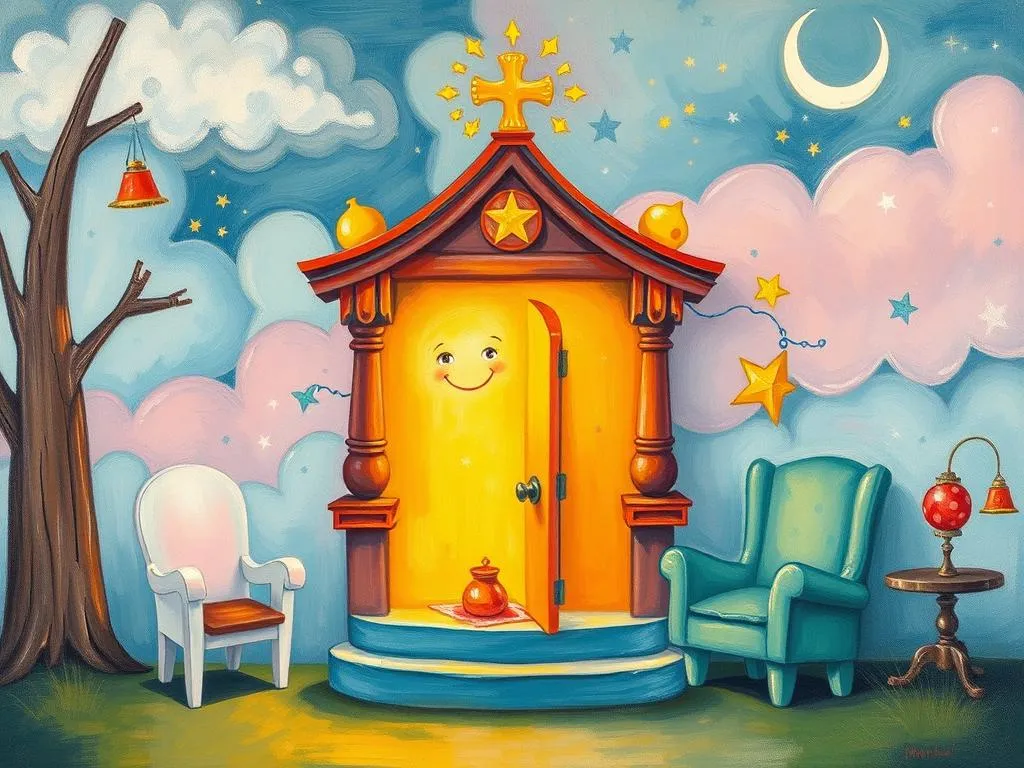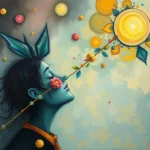
Have you ever woken from a dream and felt a lingering sense of confusion or curiosity? Dreams often feel like a secret language, filled with symbols that only our subconscious understands. As you traverse the landscape of your dreams, you may discover a treasure trove of insights waiting to be unveiled. In this exploration, we’ll delve into the rich tapestry of dream symbols, drawing on cultural perspectives, psychological insights, and practical advice. So, grab a cozy seat at the Dream Symbols Clubhouse, and let’s embark on this fascinating journey together.
Dreams are more than just whimsical narratives; they are reflections of our thoughts, feelings, and experiences. Every symbol carries meaning, whether it’s a soaring bird, a deep chasm, or a forgotten childhood space. Understanding these symbols can unlock profound insights about ourselves and our lives. In this article, we’ll decode the language of dreams and help you navigate your inner world.
Unpacking the Symbolic Treasure Chest
Every dream is a symbolic treasure chest filled with unique items that reflect our inner thoughts and emotions. To decode these symbols, it’s essential to recognize the common themes that transcend cultures and psychological frameworks. For instance, many people dream of flying, which often symbolizes a desire for freedom or escape from the constraints of daily life. In contrast, dreaming about falling can represent feelings of loss, vulnerability, or a fear of failure.
Another prevalent dream symbol is water, which can signify a range of emotions. In many cultures, water is associated with purification and rebirth. For example, in Native American traditions, water is seen as a source of life and spiritual energy. Conversely, a flood in a dream might suggest being overwhelmed by emotions or circumstances beyond your control.
Houses or buildings in dreams often serve as representations of the self. A well-maintained home might indicate a sense of stability and comfort, while a dilapidated structure could reflect feelings of insecurity or neglect. Similarly, the presence of animals in dreams—whether domestic or wild—can reveal aspects of our nature. A loyal dog might symbolize friendship and loyalty, while a snake could represent transformation or hidden fears.
Understanding these symbols involves a blend of cultural insights and psychological perspectives. The famous psychologist Carl Jung emphasized the importance of archetypes, universal symbols that resonate across cultures. For example, the mother figure often appears in dreams as a nurturing presence, embodying care and protection. Recognizing these archetypes can help you connect with your dreams on a deeper level.
Dreaming in Colors: Stories from the Spectrum
Now that we’ve unpacked some symbols, let’s dive into real-life scenarios that illustrate how these symbols manifest in our dreams. Each of these stories highlights the importance of context and personal experience when interpreting dream symbols.
Scenario 1: The Soaring Bird
Maria dreams she is flying over a vibrant landscape. She feels weightless and free, gliding effortlessly through the air. In her waking life, Maria has recently left a job that felt confining and is exploring new opportunities. The bird symbolizes her newfound freedom and desire to embrace change.
Scenario 2: The Flooded Room
James finds himself in a dream where his childhood home is flooded, and he struggles to stay afloat. As he swims through the water, he recalls painful memories tied to that house. The flood represents his overwhelming emotions regarding a recent breakup. This dream prompts him to confront and process these feelings in his waking life.
Scenario 3: The Crumbling House
Emily dreams she walks through a crumbling mansion filled with shadows. She feels a sense of unease and disconnection as she explores the dark hallways. This dream mirrors her current feelings of anxiety and instability in her career. The house symbolizes her state of mind, urging her to seek support and rebuild her confidence.
Scenario 4: The Enigmatic Snake
David has a recurring dream of encountering a snake in the grass. Initially terrified, he learns to approach it with curiosity. Over time, he discovers the snake sheds its skin, symbolizing transformation. David’s dream reflects his journey towards embracing change and letting go of old habits that no longer serve him.
Scenario 5: The Lost Keys
Sophia dreams she is searching for her lost keys in a labyrinthine maze. Frustrated and anxious, she wanders aimlessly until she finally finds them hidden under a bush. The keys symbolize her desire for control and direction in life. This dream encourages her to reflect on her goals and take proactive steps toward achieving them.
Awakened Insights: Cultivating Personal Growth
As we wrap up our exploration of dream symbols, it’s time to focus on how you can cultivate personal growth through your dream experiences. Recognizing the messages within your dreams can empower you to navigate challenges and harness your potential.
Embrace Your Inner Explorer
Start by keeping a dream journal. Write down your dreams as soon as you wake up—capture the details, symbols, and emotions you experienced. Over time, you may notice patterns and themes that can guide your personal growth journey.
Reflect on Symbolic Meanings
When you encounter a recurring symbol in your dreams, take a moment to reflect on its meaning. Ask yourself: What does this symbol represent in my life? How does it connect to my current challenges or aspirations? This self-reflection can lead to valuable insights.
Seek Guidance from Different Cultures
Explore how various cultures interpret dream symbols. For instance, in Chinese culture, dreaming of a dragon might symbolize strength and power, while in Western traditions, it could represent fear or the unknown. By comparing interpretations, you can gain a broader perspective on your dreams.
Engage in Mindfulness Practices
Incorporate mindfulness and meditation into your routine to enhance your self-awareness. These practices can help you connect with your subconscious and create a space for introspection. As you cultivate awareness, you may find it easier to understand the messages in your dreams.
Share and Discuss
Join a dream interpretation group or community—whether it’s online or in person. Sharing your dreams and hearing others’ experiences can provide new insights and support. Sometimes, simply vocalizing your dreams can spark clarity and understanding.
As you navigate the landscape of your dreams, remember that they are powerful tools for self-discovery and growth. They hold wisdom that can help you understand your fears, desires, and potential paths forward. The journey of dream interpretation is not just about decoding symbols; it’s also about embracing your inner landscape and using that knowledge to shape your waking life.
In conclusion, dreams are the whispers of our subconscious, offering guidance and reflection. They invite us to explore the depths of our emotions and experiences. As you continue your journey through the Dream Symbols Clubhouse, let curiosity be your compass. The next time you awaken from a vivid dream, take a moment to consider its symbols and messages. You may discover that your dreams are not just fantasy but a profound source of insight and wisdom.
Reflect on this: What if your dreams are not just fleeting images but a powerful roadmap guiding you toward a more authentic and fulfilling life? Embrace the journey, and let your dreams illuminate the path ahead.







